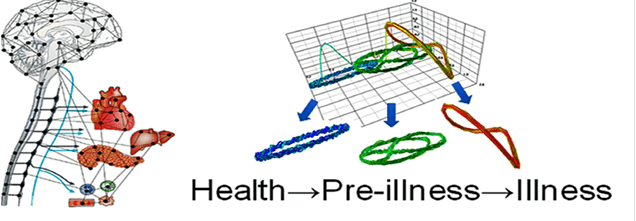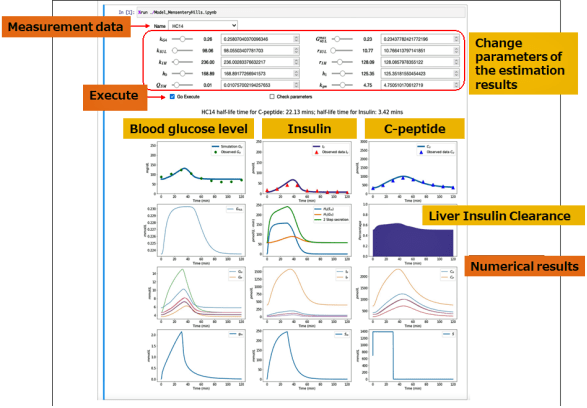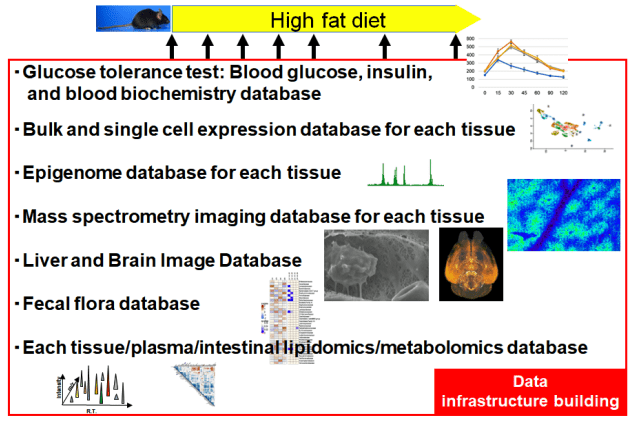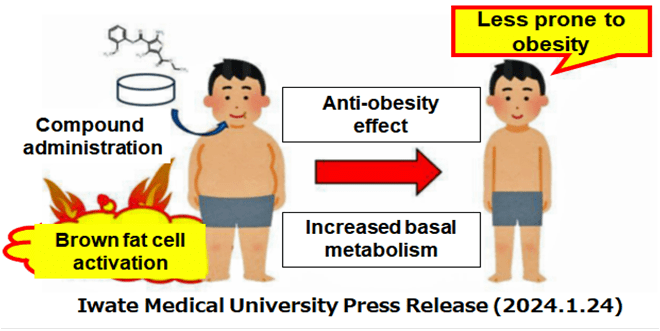- Moonshot R&D
- Program
- Goal 2
- Challenge for Eradication of Diabetes and Comorbidities through Understanding and Manipulating Homeostatic Systems
- [4 & 5] Understanding homeostasis through mathematical model analysis and its applications, Understanding the pre-symptomatic stage of diabetes and its complications and building a database
Progress Report
Challenge for Eradication of Diabetes and Comorbidities through Understanding and Manipulating Homeostatic Systems[4 & 5] Understanding homeostasis through mathematical model analysis and its applications, Understanding the pre-symptomatic stage of diabetes and its complications and building a database
Progress until FY2024
1. Outline of the project
The two R&D items (Items 4 and 5) play two roles in the project: (i) to collect various data over time on the transition from the normal or pre-symptomatic stage to the diseased state, focusing on type 2 diabetes and its concomitant disease, heart failure (Theme 5), and (ii) to use these animal experimental data and human biological data to advance mathematical model analysis to extract key elements for a comprehensive understanding.

To achieve this, close collaboration between mathematical scientists and medical and biological researchers is a challenge.
We are working on the concept of linking experiments/data acquisition with model analysis using various methods such as biochemistry, gene expression, epigenomics, metabolomics, organ-specific functional analysis, and mathematical model analysis.
2. Outcome so far
(1) Implementation of glucose tolerance test simulator
We have developed an oral glucose tolerance test simulator using a 9-compartment model that allows easy parameter manipulation. This simulator makes it possible to evaluate changes in blood glucose and insulin levels and the metabolic state of each organ by changing various parameters.

(2) Discovery of intestinal bacteria that reduce obesity in people with sweet tooth
We identified Streptococcus salivarius, a species of commensal bacteria of the human digestive tract that produces high levels of indigestible extracellular polysaccharide (EPS), as a biomarker for suppressing sugar (sucrose)-induced obesity. EPS and EPS-producing bacteria are highly expected to lead to technologies for detecting obesity at a very early, pre-disease stage using improvement of the intestinal environment as an indicator, and to new types of obesity prevention and treatment.

(3) Discovery of a novel anti-obesity drug candidate that reduces weight gain by increasing heat production
From the search for compounds that increase heat production in adipocytes, we have found compounds that exhibit anti-obesity effects in animal experiments. It is expected not only to lead to weight loss, but also to therapeutic applications for various diseases such as diabetes, dyslipidemia, and fatty liver related to obesity and metabolic syndrome.

3. Future plans
In the future, by focusing on glucose and insulin metabolism in each compartment, we will try to capture diabetes-specific changes in metabolism and find the key factor parameters that cause these metabolic changes. This will allow us to mathematically clarify the mechanism of diabetes development in mice.
In addition, to construct mathematical modeling using data from pre-symptomatic stage analysis, we will try mathematical modeling focusing on the relationship between intestinal microbiota and obesity. This captures the parameters of the transition from health to disease and searches for candidate factors for pre-symptomatic stage.